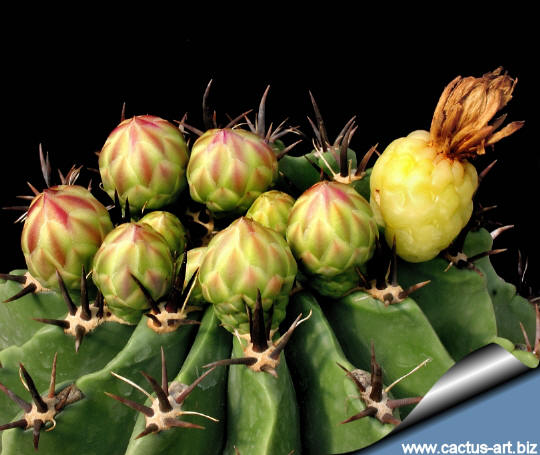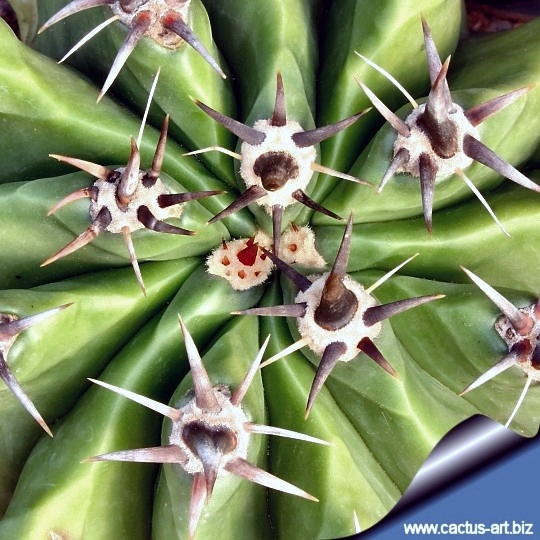|
Family:
Cactaceae (Cactus
Family)
Scientific name:
Ferocactus horridus f.
brevispina
Origin: F. horridus came from
Mexico (Southern Baja California) but this short spined
form is presumably of
garden origin (Nursery selected form)
Habitat: Grows in grit on the hill-sides. It gets lots of
water in two months and lots of sun all year.
Conservation status: Listed in
CITES appendix 2.
Synonyms:
Ferocactus
peninsulae var. brevispinus
This plant is sometime referred as : Ferocactus herrerae var.
brevispinus

|
|


Cultivation:
F. horridus
is a summer-growing and pretty easy species thought
slow to start. It is suited for any rich, well
drained soil such us clay, pumice, lava grit, and only a little
peat or leaf-mould. If potted, repot preferably in the spring, if their
roots become cramped. Generally, they should be repotted every
other year in order to provide fresh soil. However, this doesn't
necessarily mean they'll need larger containers. Fill about a quarter of
the pot with broken crocks, gravel, etc. to promote good drainage. After
repotting, do not water for a week or more. Water regularly during the
aestival growth cycle (this plant need plenty of water, but do not
overwater and let their soil dry out between waterings),
and also needs to be avoided wetting the body
of this plant while it is in sunlight. A wet cactus in the sun light can
cause sun burning which can lead to scares or even fungal infections and
death, keep rather dry in winter. No water should ever be allowed to
stand around the roots. Feed with a high potassium fertilizer in summer.
Exposure: Outside they need a bright exposure,
full sun or half shade in summer if the location is exceedingly hot or
bright, inside needs bright light, and some direct sun.
It can tolerate moderate shade, and a plant that has been growing in
shade should be slowly hardened off before placing it in full sun as the
plant will be severely scorched if moved too suddenly from shade into
sun.
Frost Tolerance: Light frost protection required for
safe cultivation, but can tolerate sporadic light frost. This
plants need a period of cool rest in winter to produce flowers
abundantly.
Diseases and pests:
Watch for infestations of
mealybug, scale insects and spider mite.
Plant in good conditions will
start to bloom when reach the diameter of only 15-18 cm.
Propagation:
Seeds are the only way of
reproducing.
|